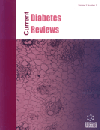
-
oa An Association between Bilirubin and Diabetic Retinopathy in Patients with Type 2 Diabetes Mellitus: An Effect Modification by Nrf2 Polymorphisms
-
-
- 30 May 2024
- 11 Sep 2024
- 29 Nov 2024
Abstract
iabetic retinopathy (DR) is a persistent microvascular complication associated with diabetes, and it constitutes a significant cause of visual impairment and blindness.
This study aimed to assess the correlation between serum bilirubin levels and the prevalence of DR in patients diagnosed with type 2 diabetes mellitus (T2DM). Additionally, we sought to establish whether the polymorphisms of Nuclear Factor E2-Related Factor 2 (Nrf2) might modify this relationship.
A cross-sectional study was undertaken in Jiangxi, China, from May, 2012 to December, 2014. Serum bilirubin levels were assessed in 558 subjects, and the correlation between bilirubin and DR was analyzed using generalized linear models with a logit link. The study utilized odds ratios (OR) and 95% confidence intervals (CI) to evaluate the relationship, both with and without the consideration of clinical risk factors.
There was a significant inverse association between serum total bilirubin (TBiL) and the risk of DR (per 1-μmol/L increment; OR, 0.89; 95% CI: 0.84-0.94). Accordingly, when TBiL was categorized into tertiles, individuals in tertiles 2 and 3 exhibited significantly lower risks of DR compared to those in tertile 1. The OR for these tertiles was 0.54 (95% CI: 0.34-0.87) and 0.31 (95% CI: 0.19-0.52), respectively. Moreover, a stronger inverse relationship between TBiL and DR was observed in individuals carrying the CC and AC genotypes compared to those with the AA genotype. The OR for individuals with the CC/AC genotype was 0.87 (95% CI: 0.82, 0.92), while that for the AA genotype was 1.17 (95% CI: 0.95, 1.45). This difference was statistically significant (p for interaction = 0.001).
There was a significant inverse association between bilirubin and DR in participants with CC or AC genotype. However, this inverse association was not seen in AA genotype participants.

